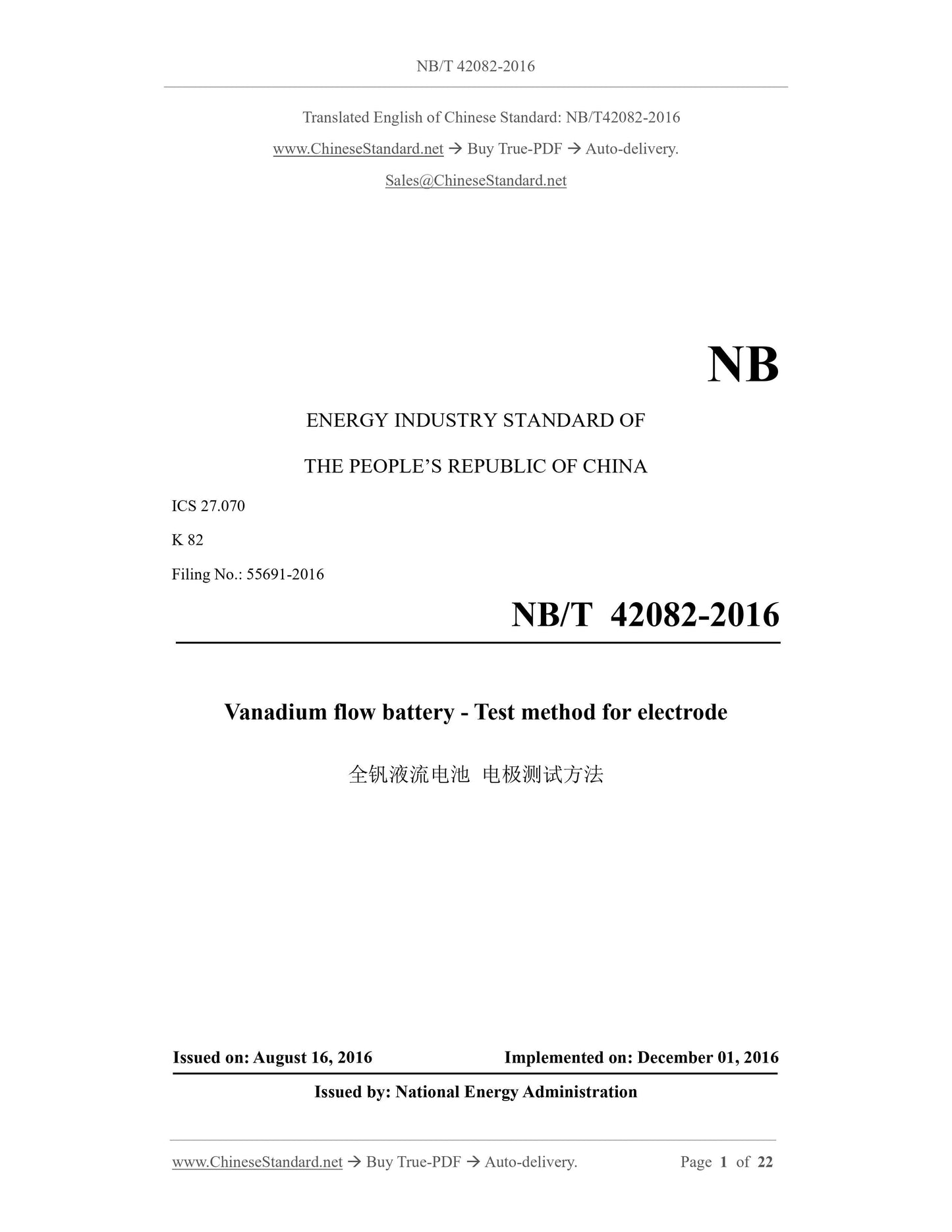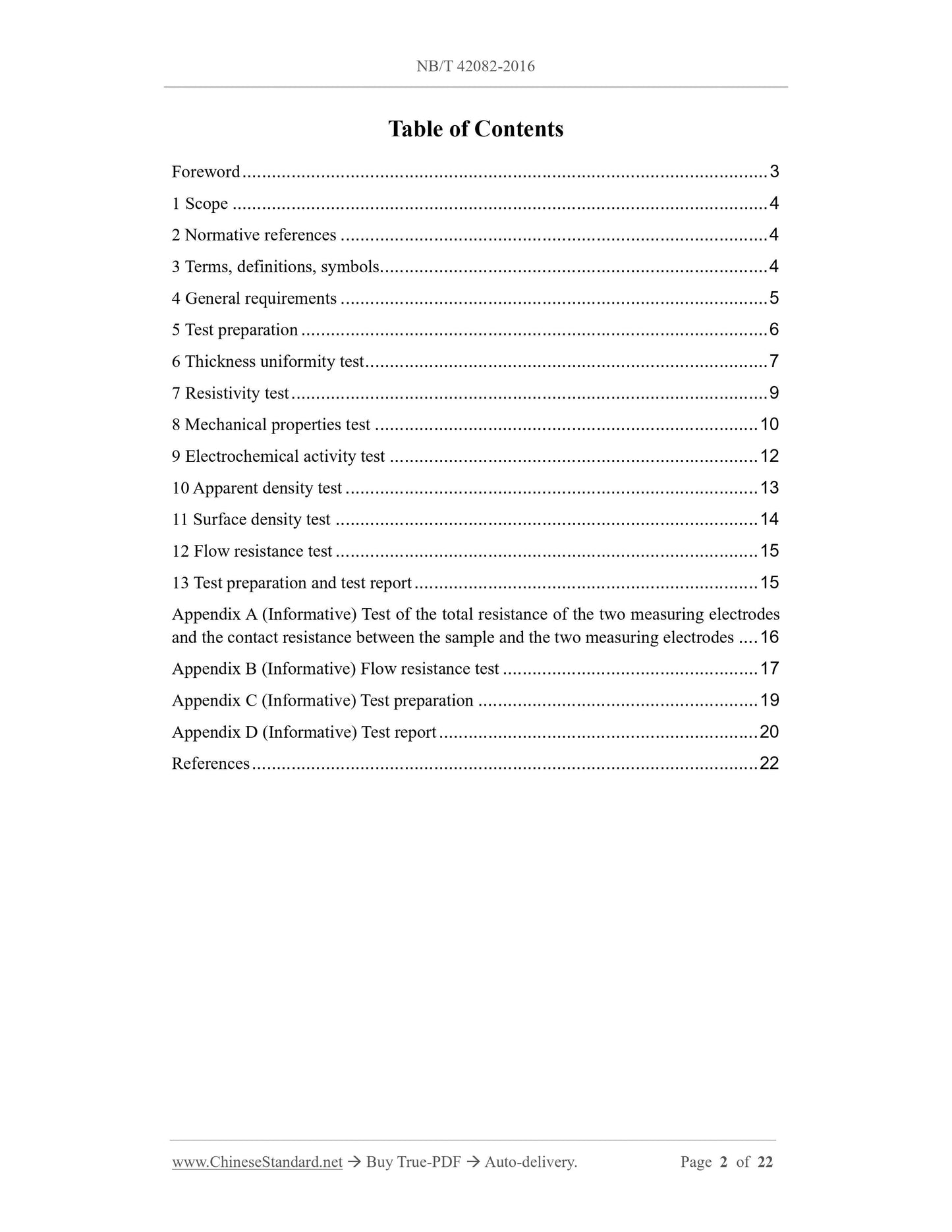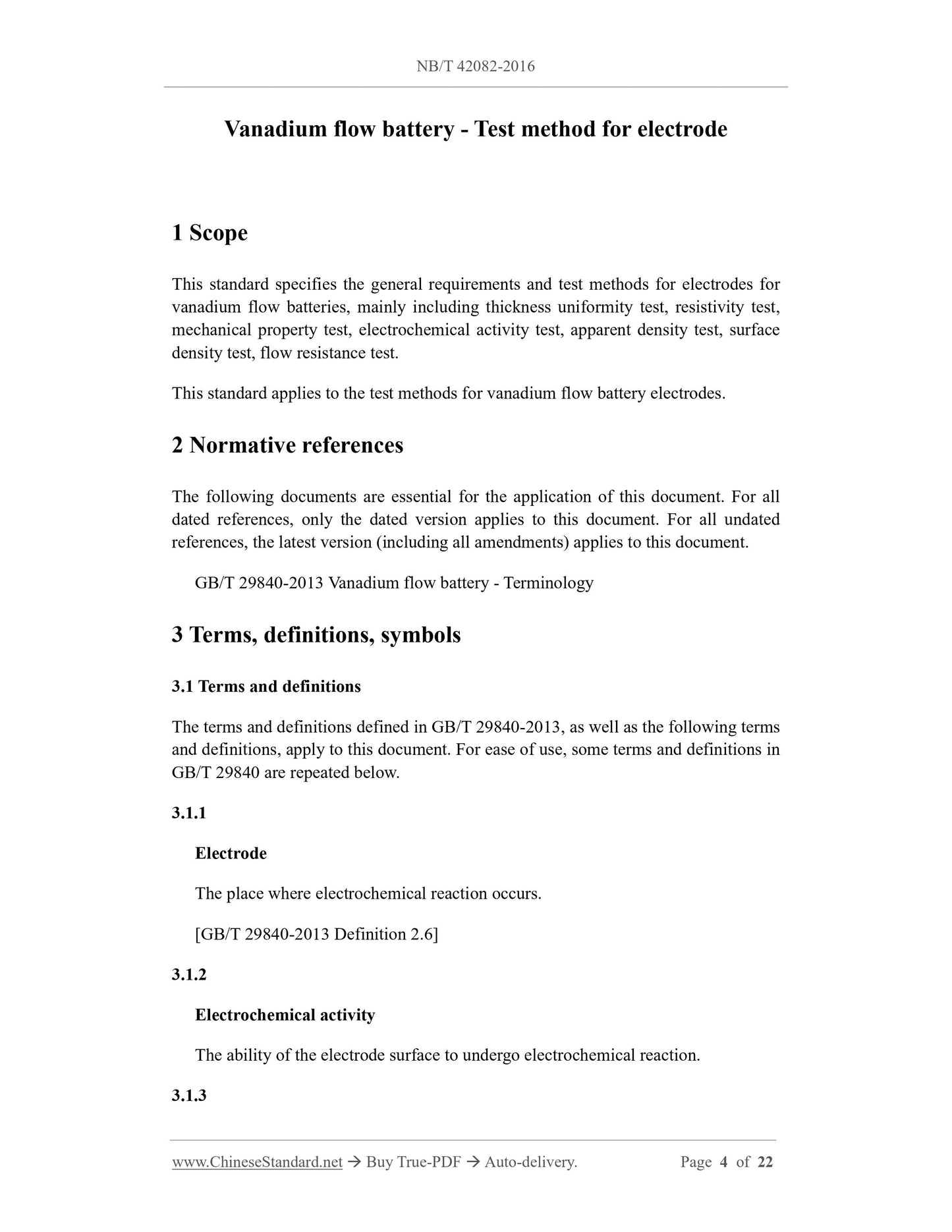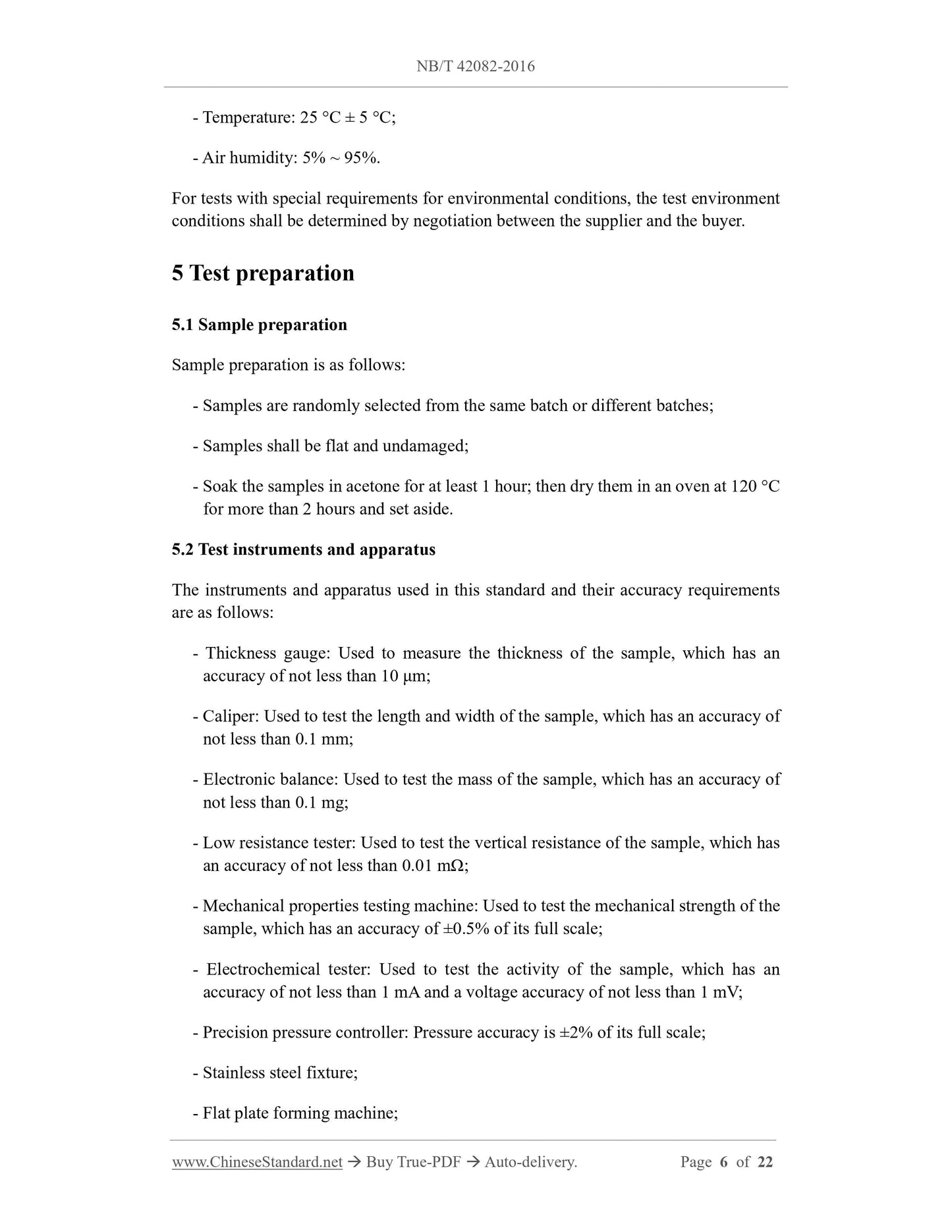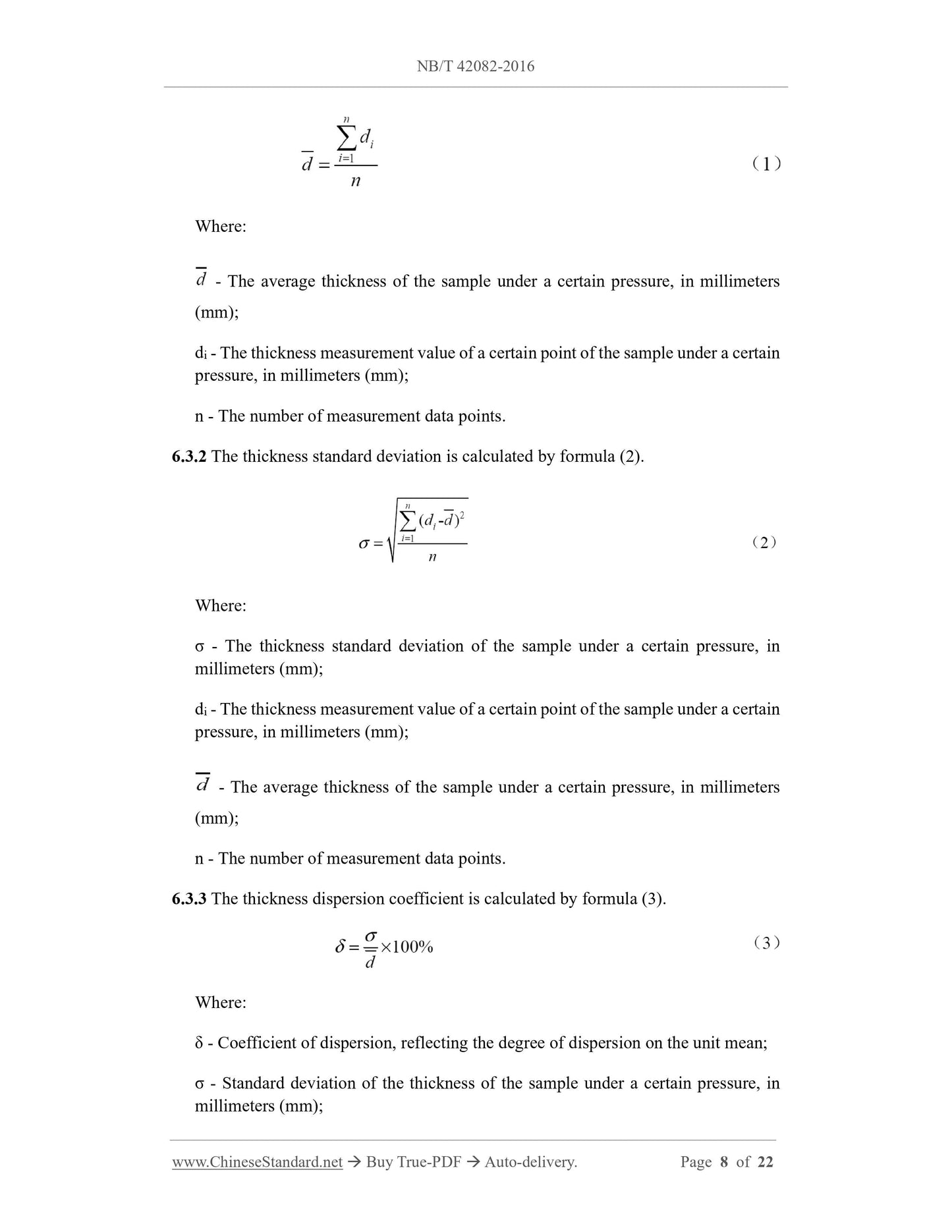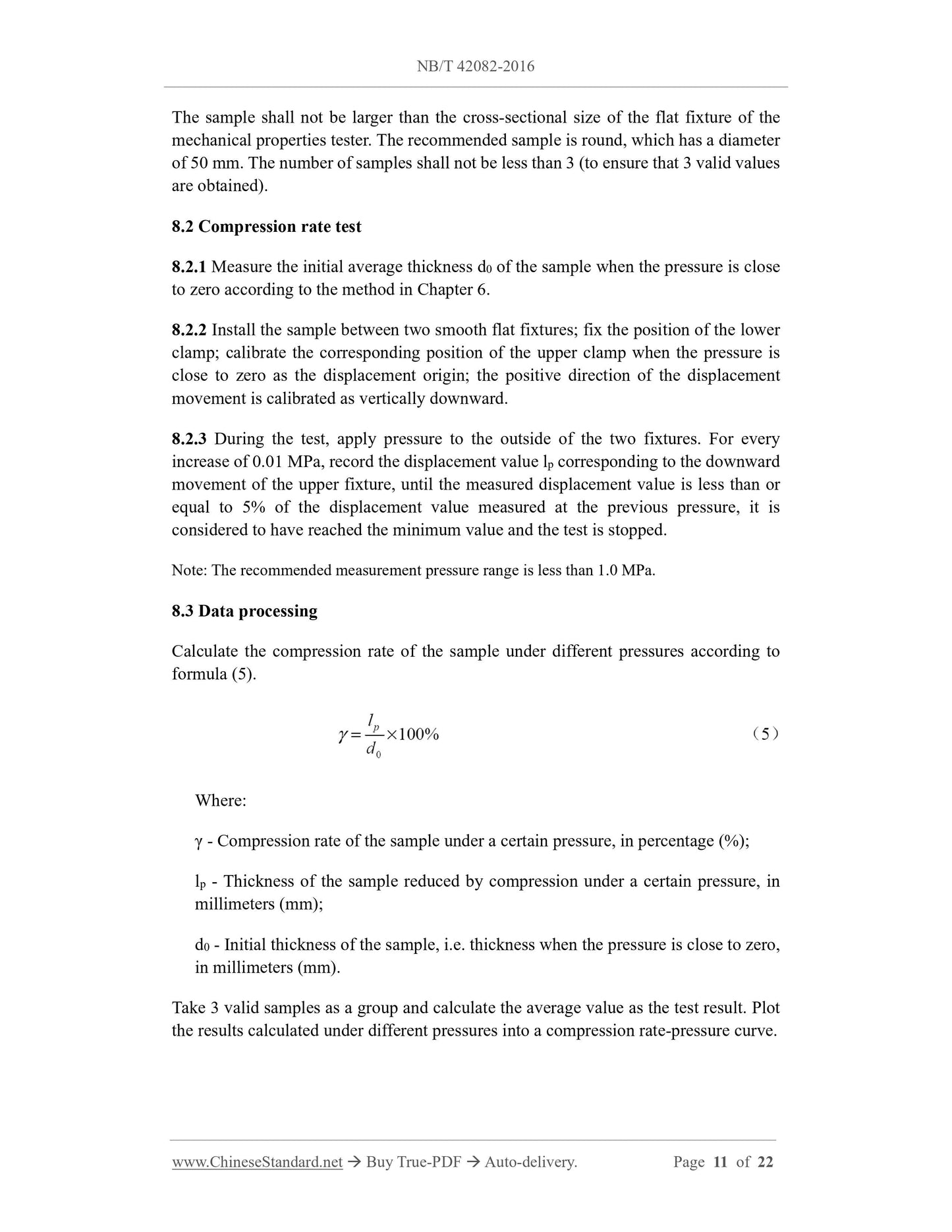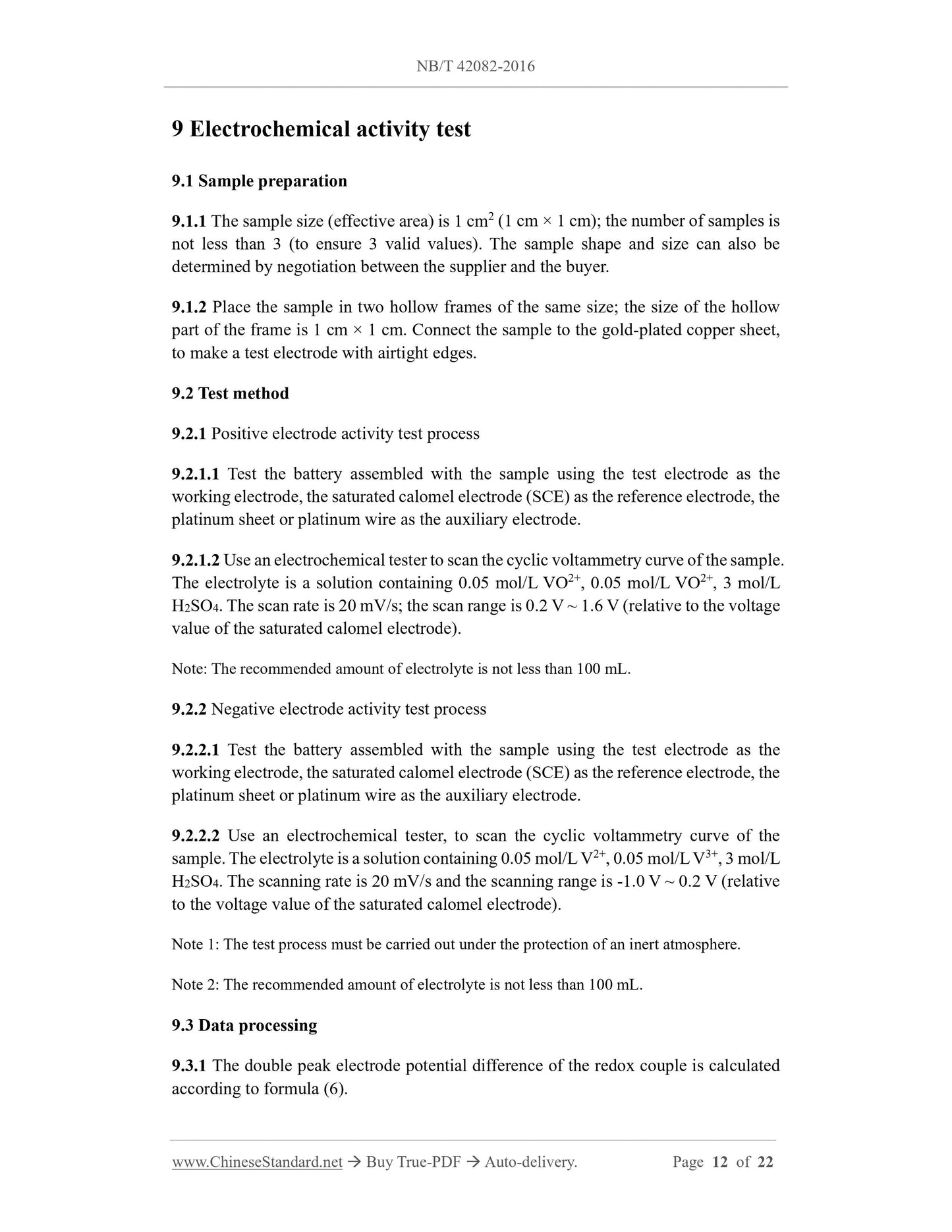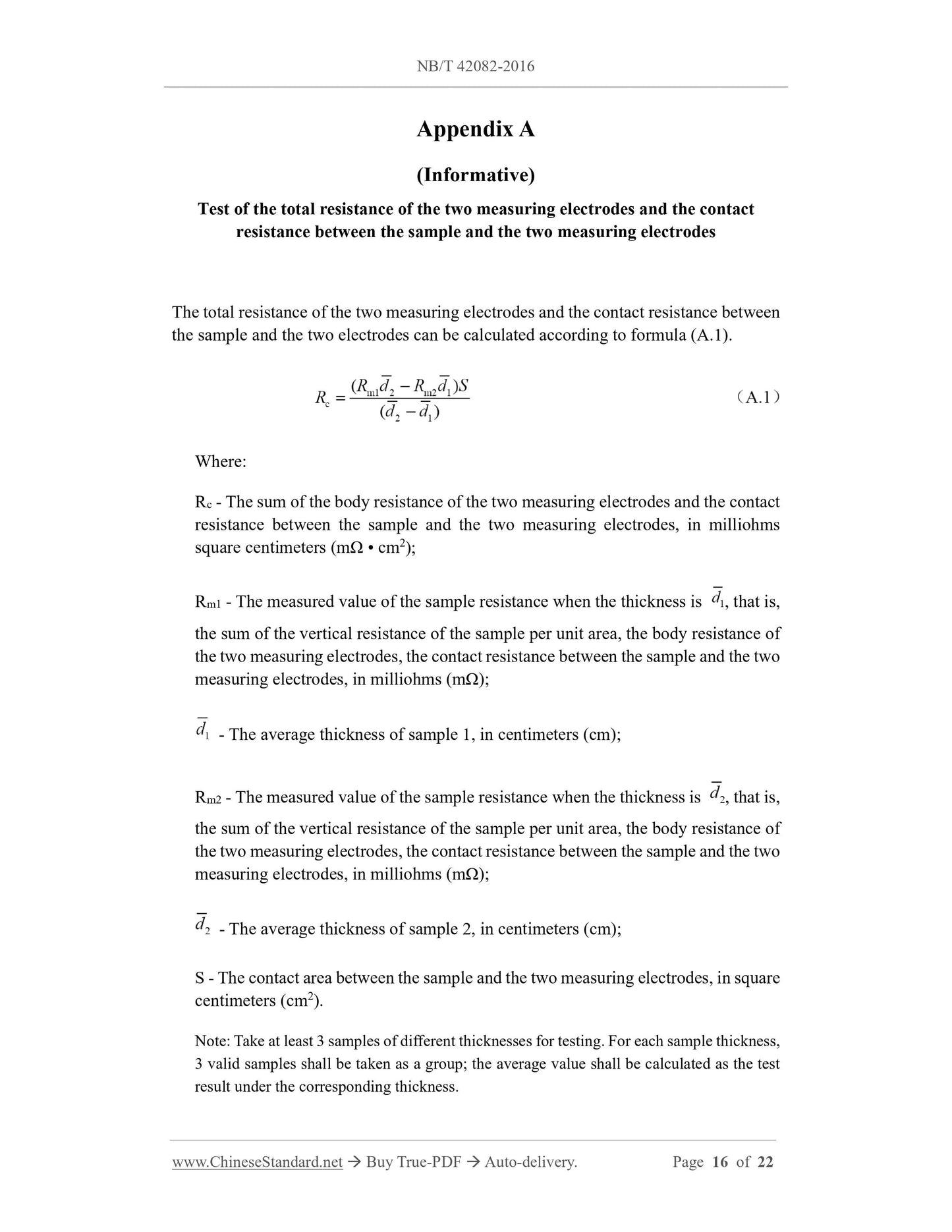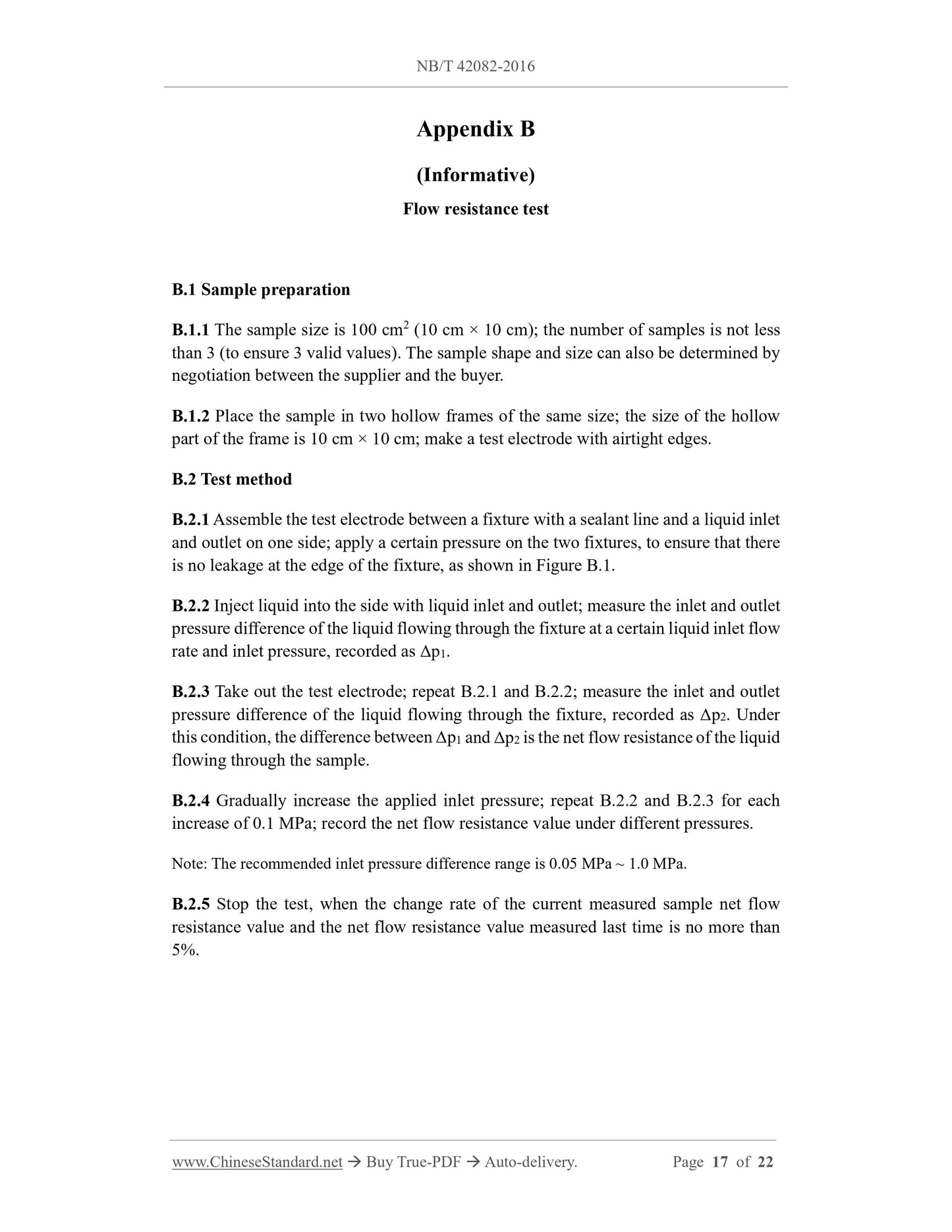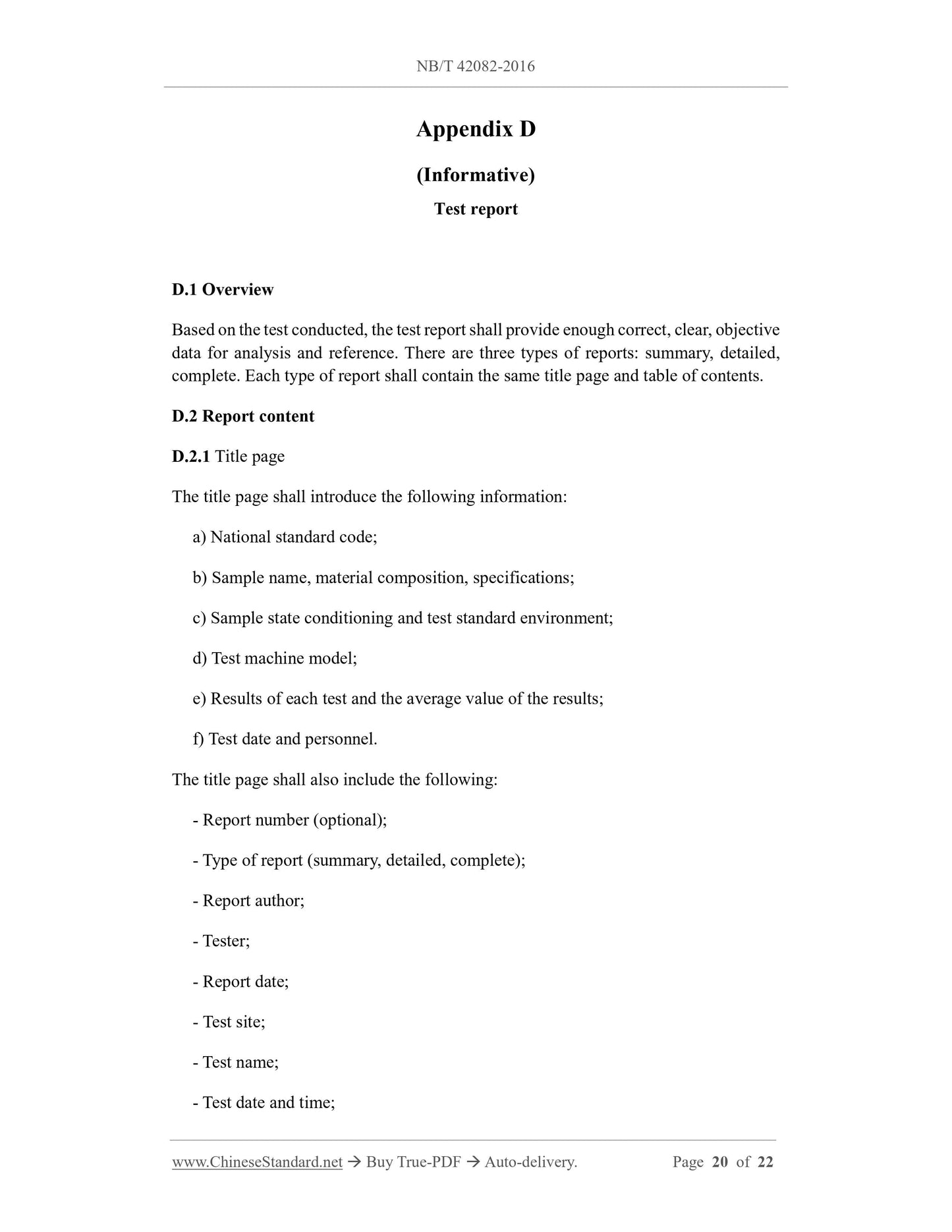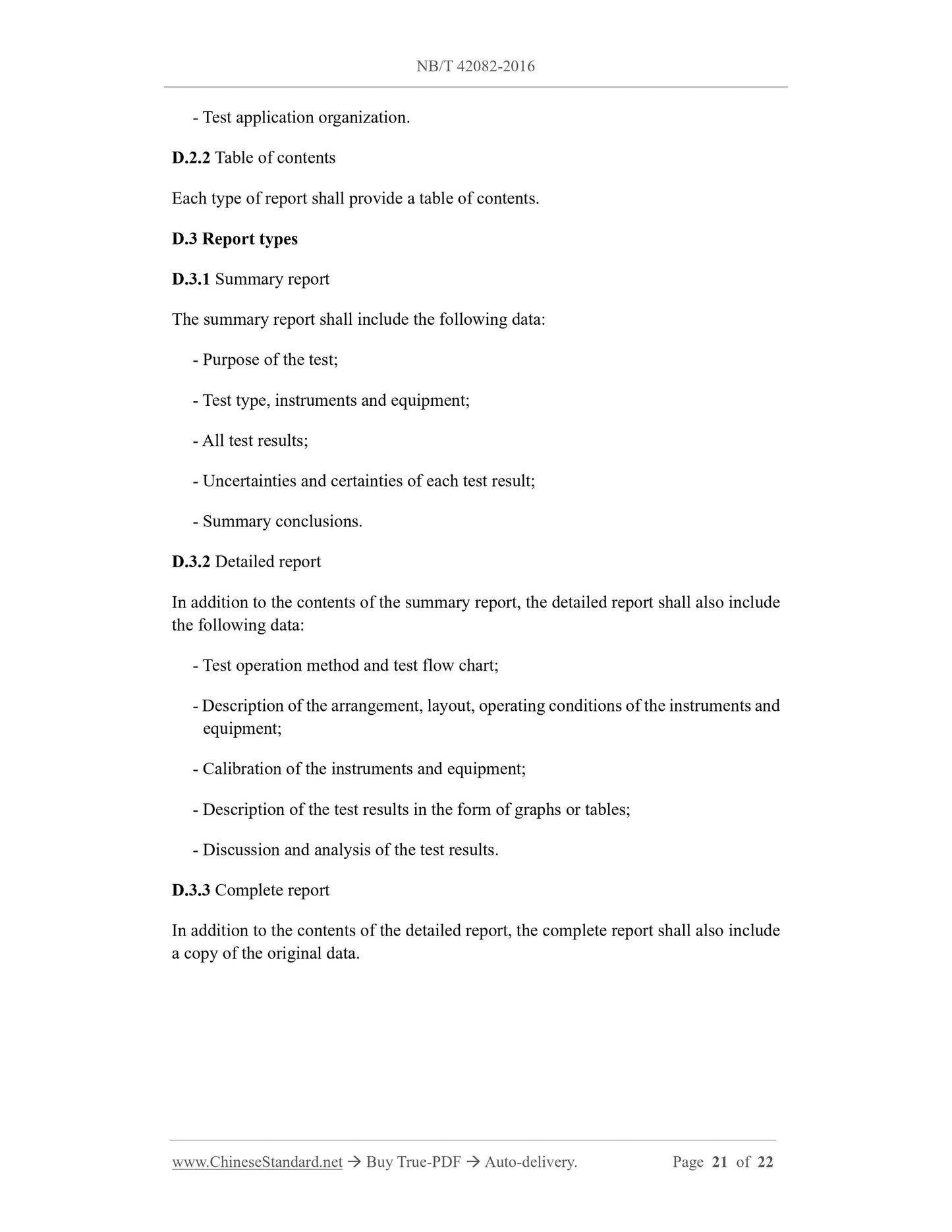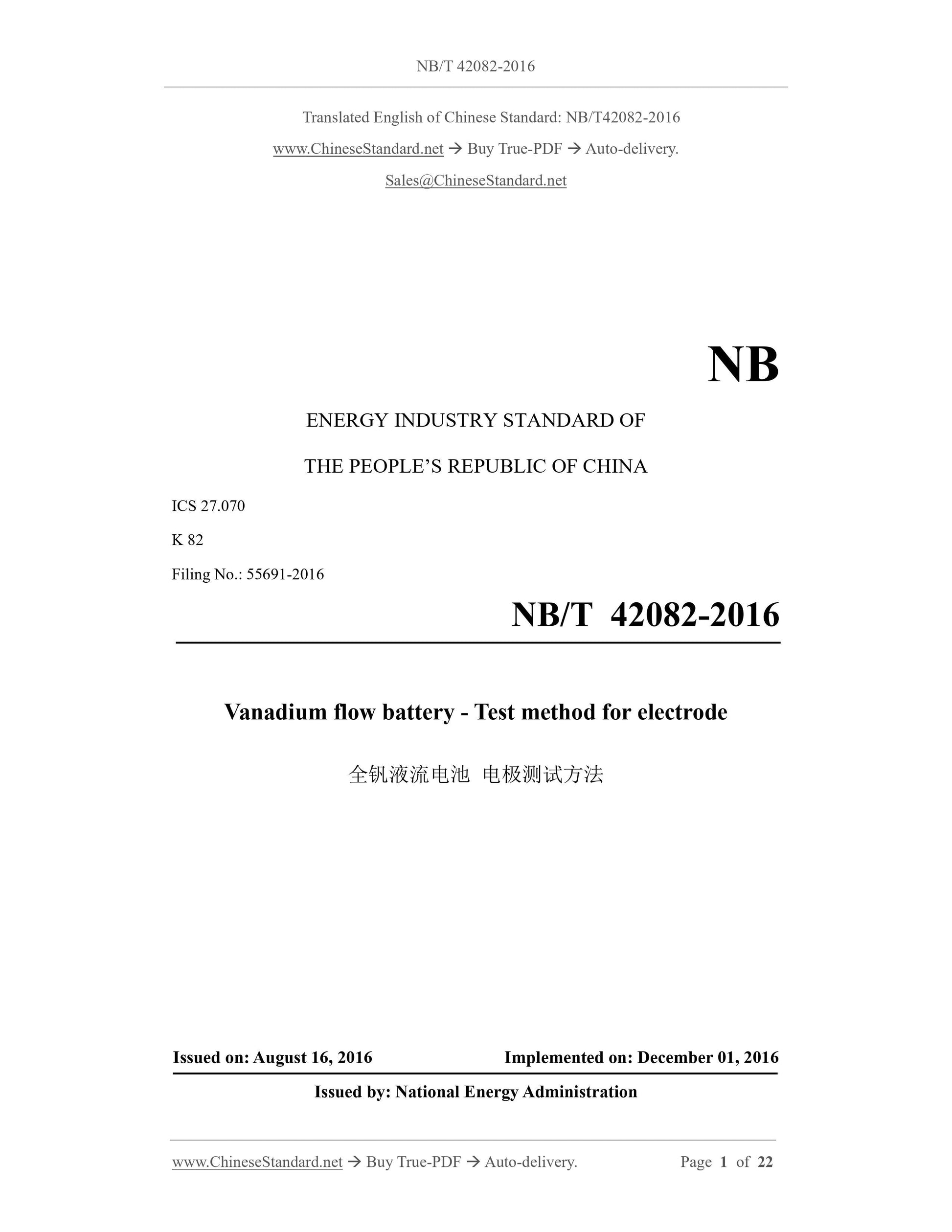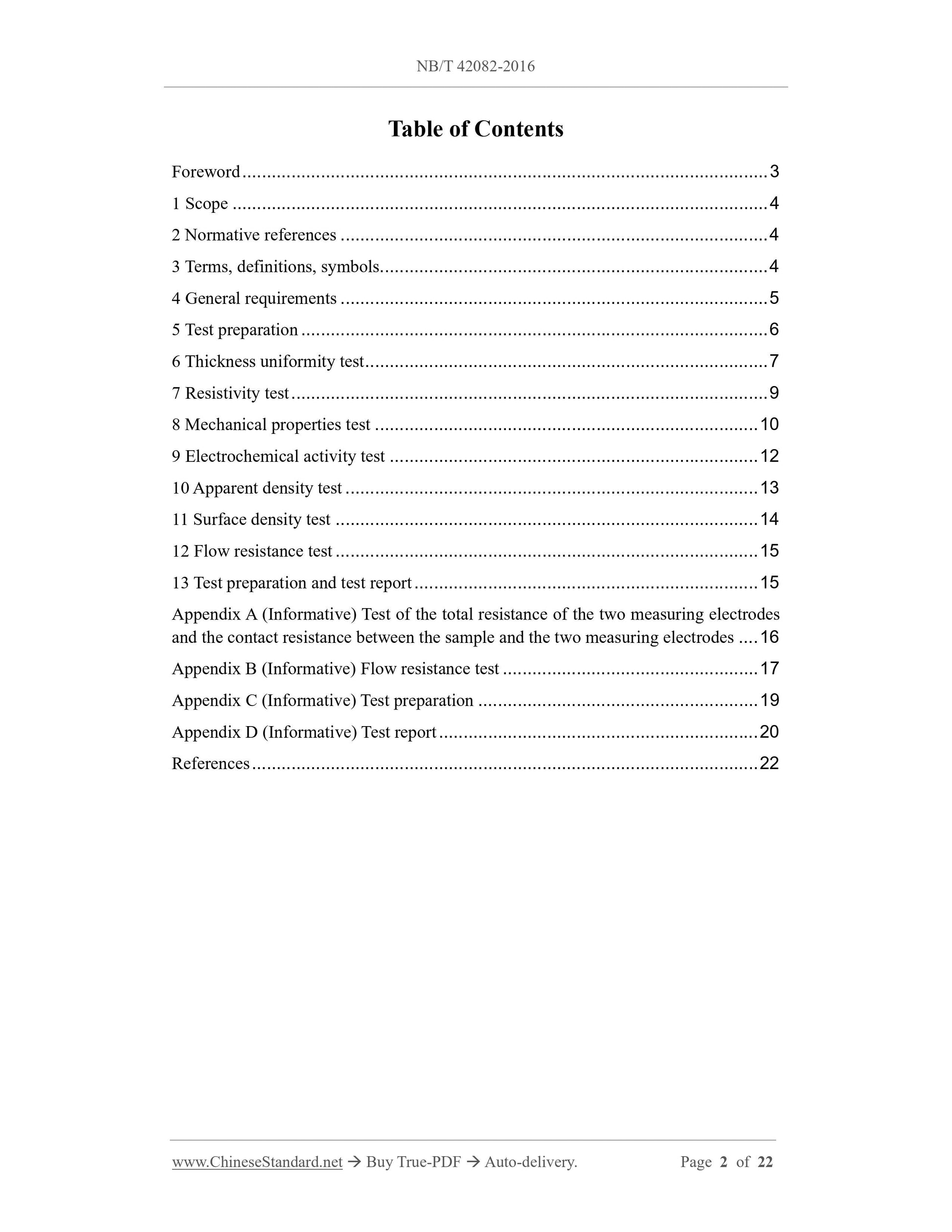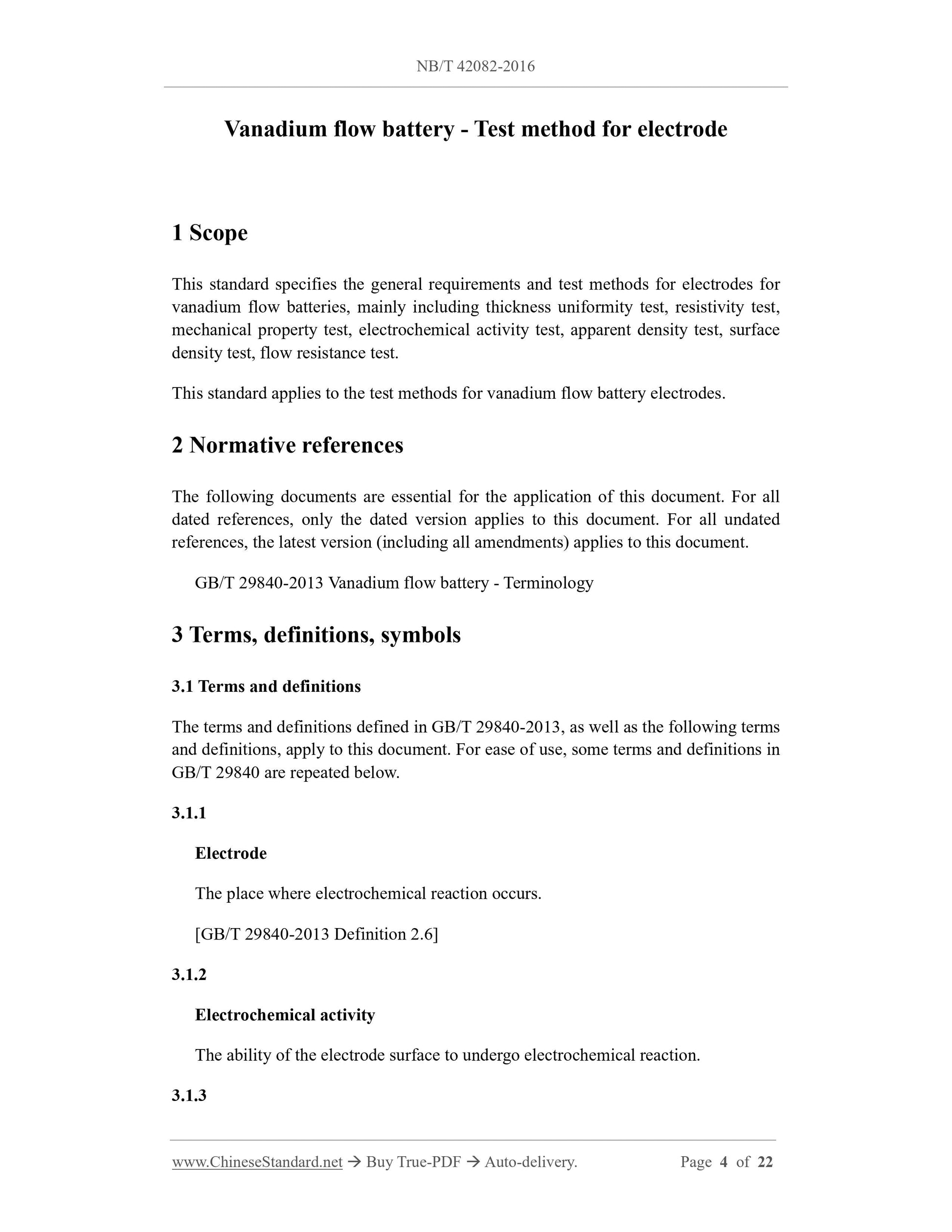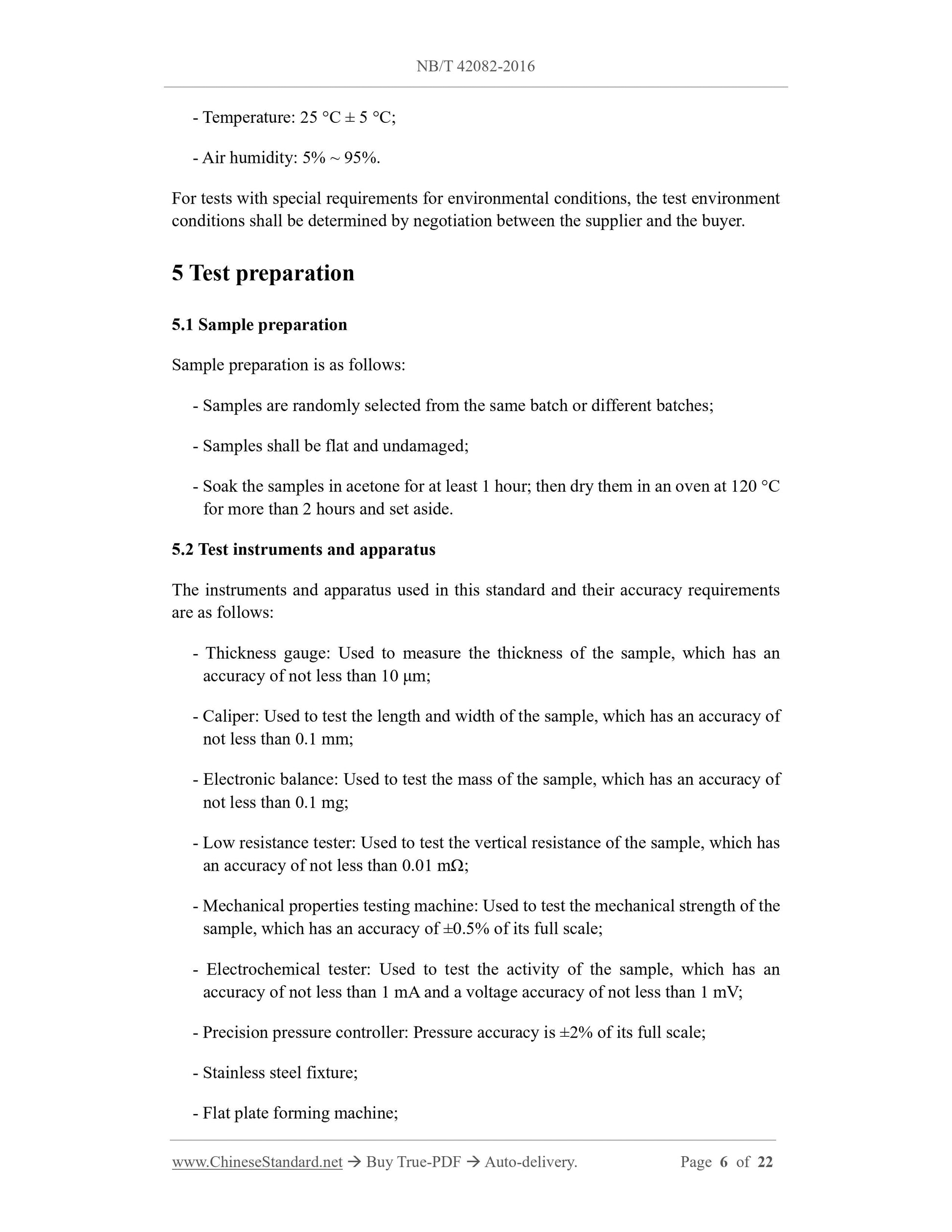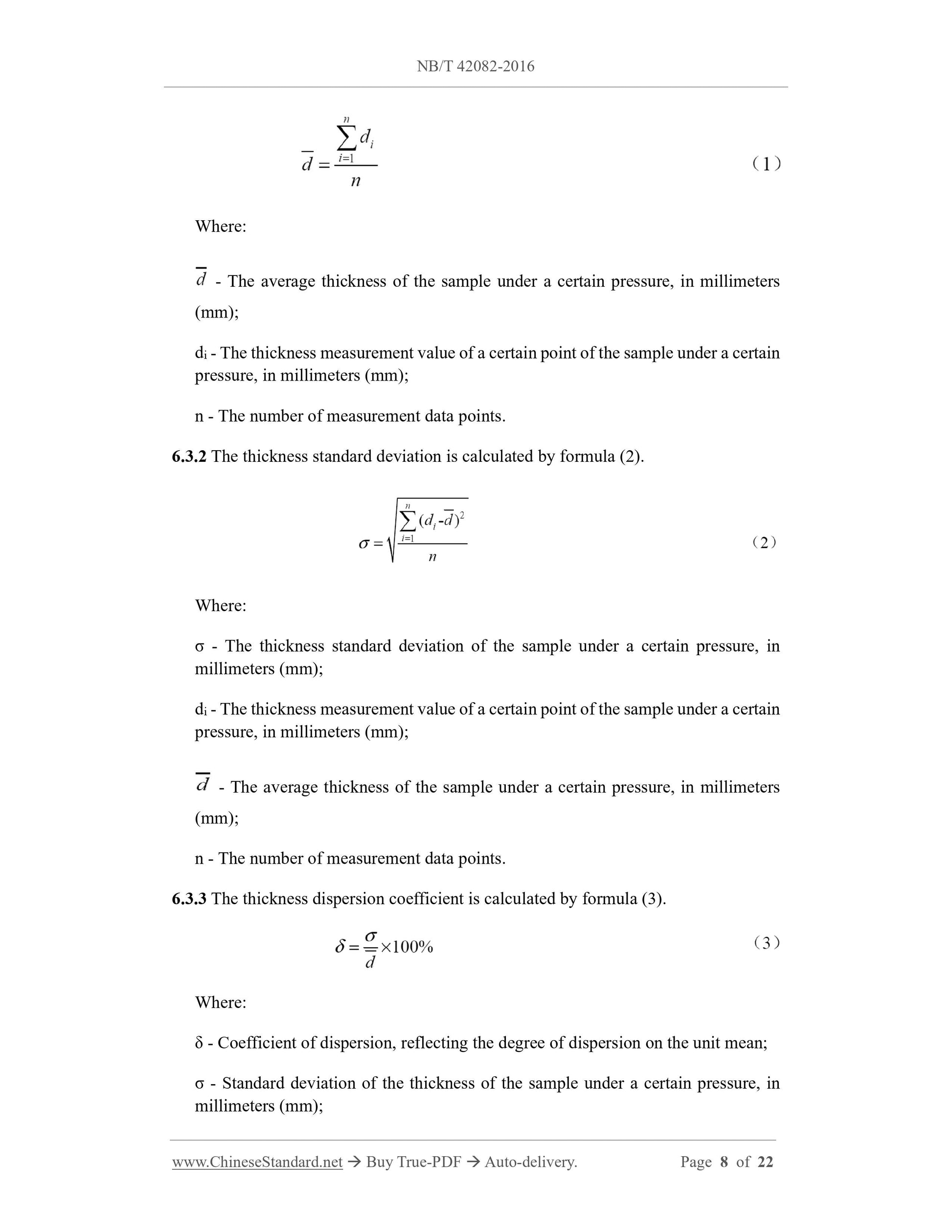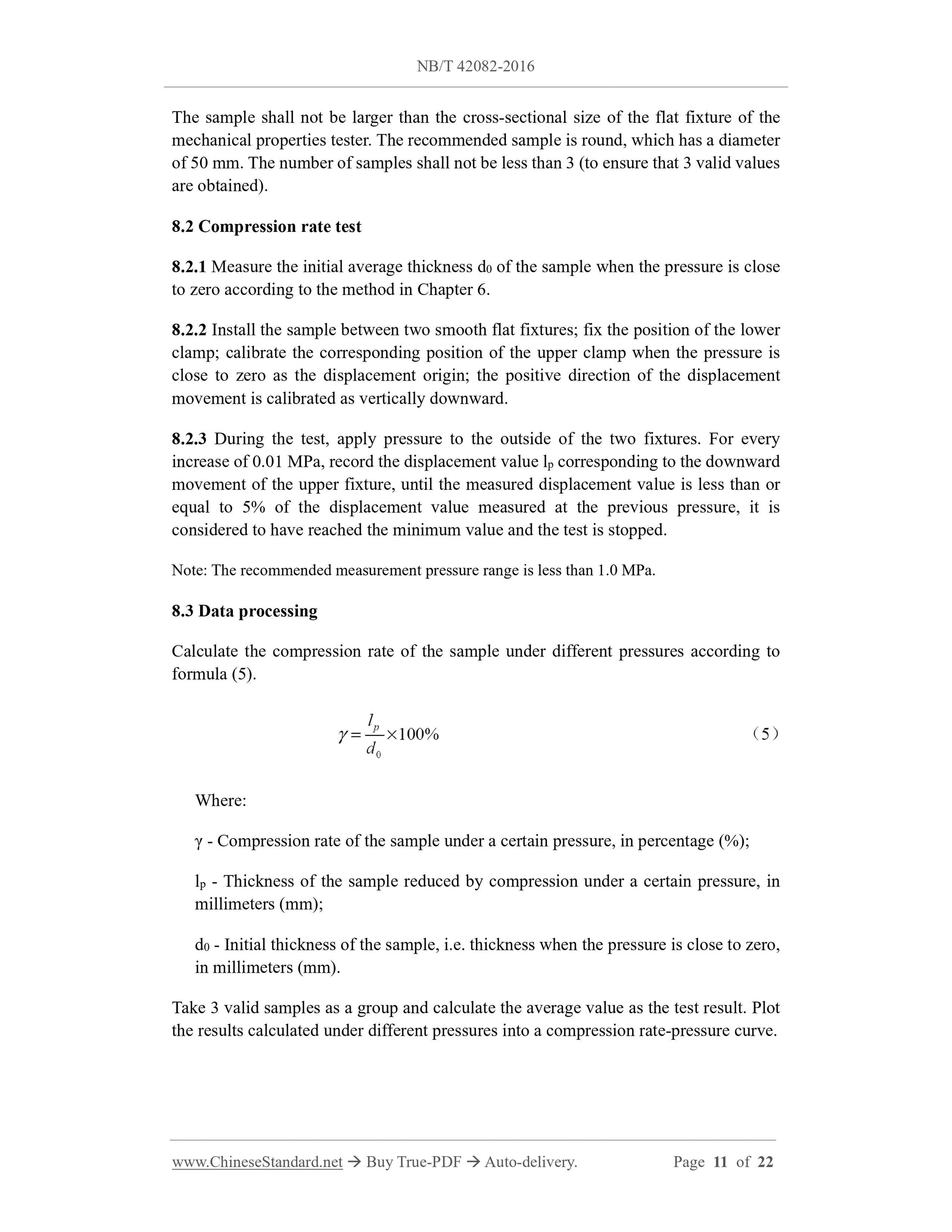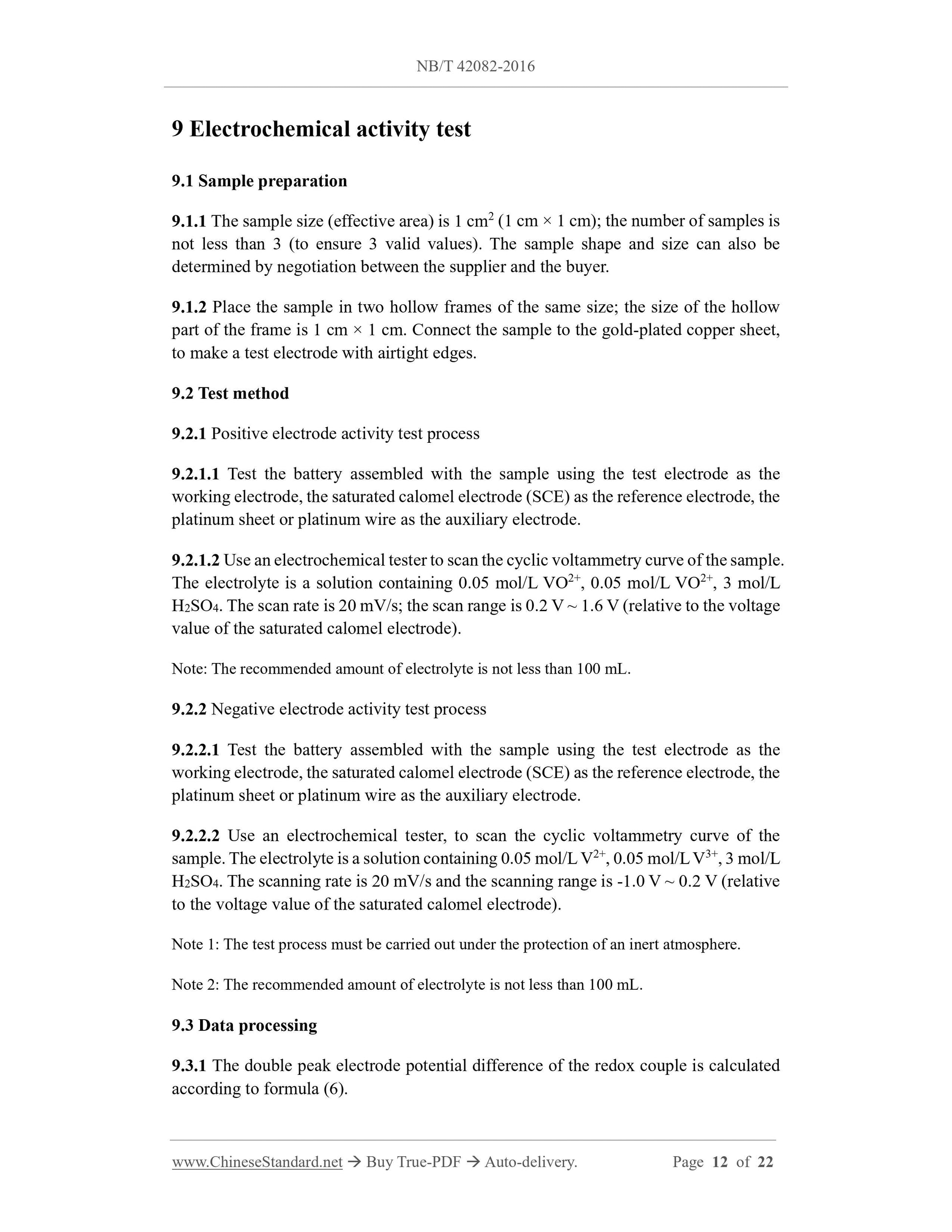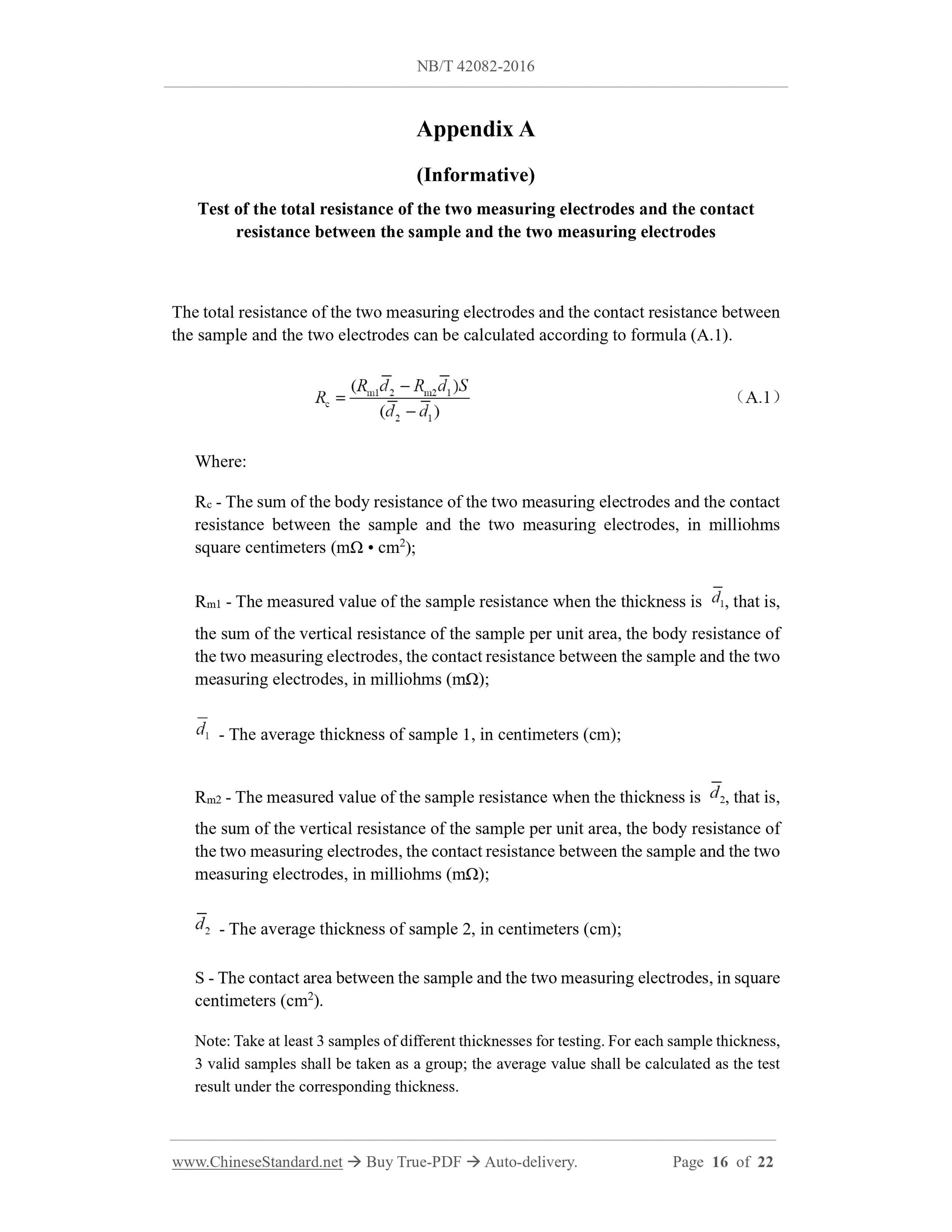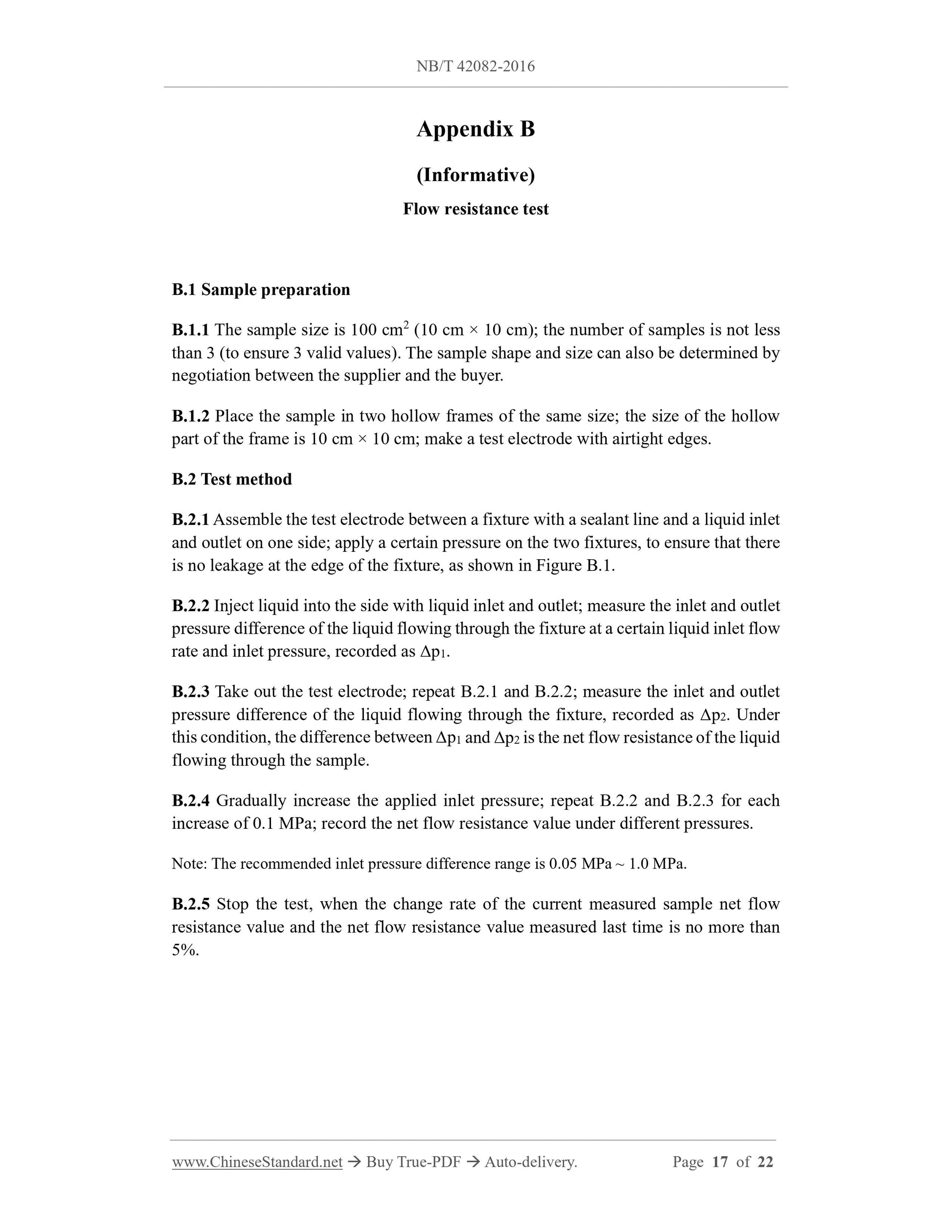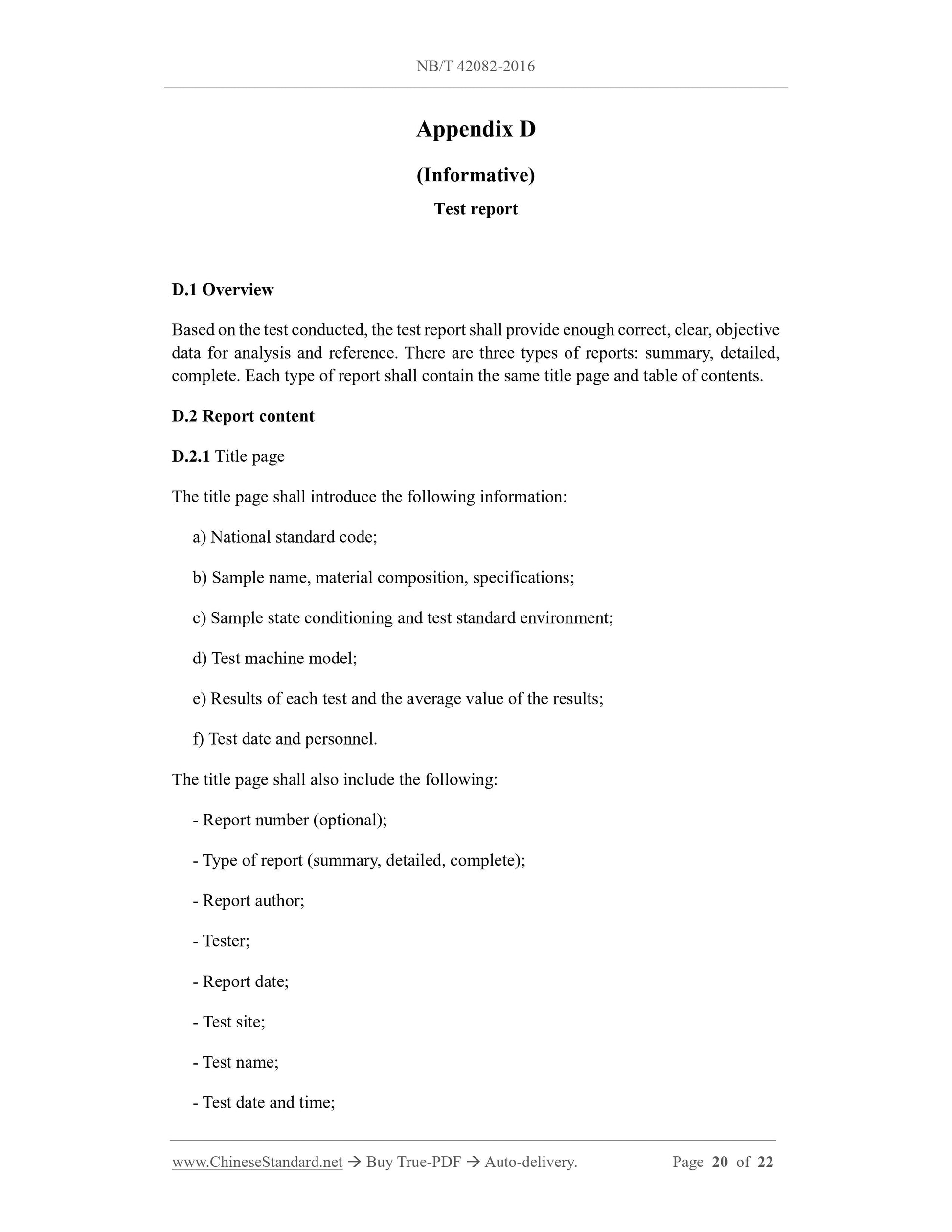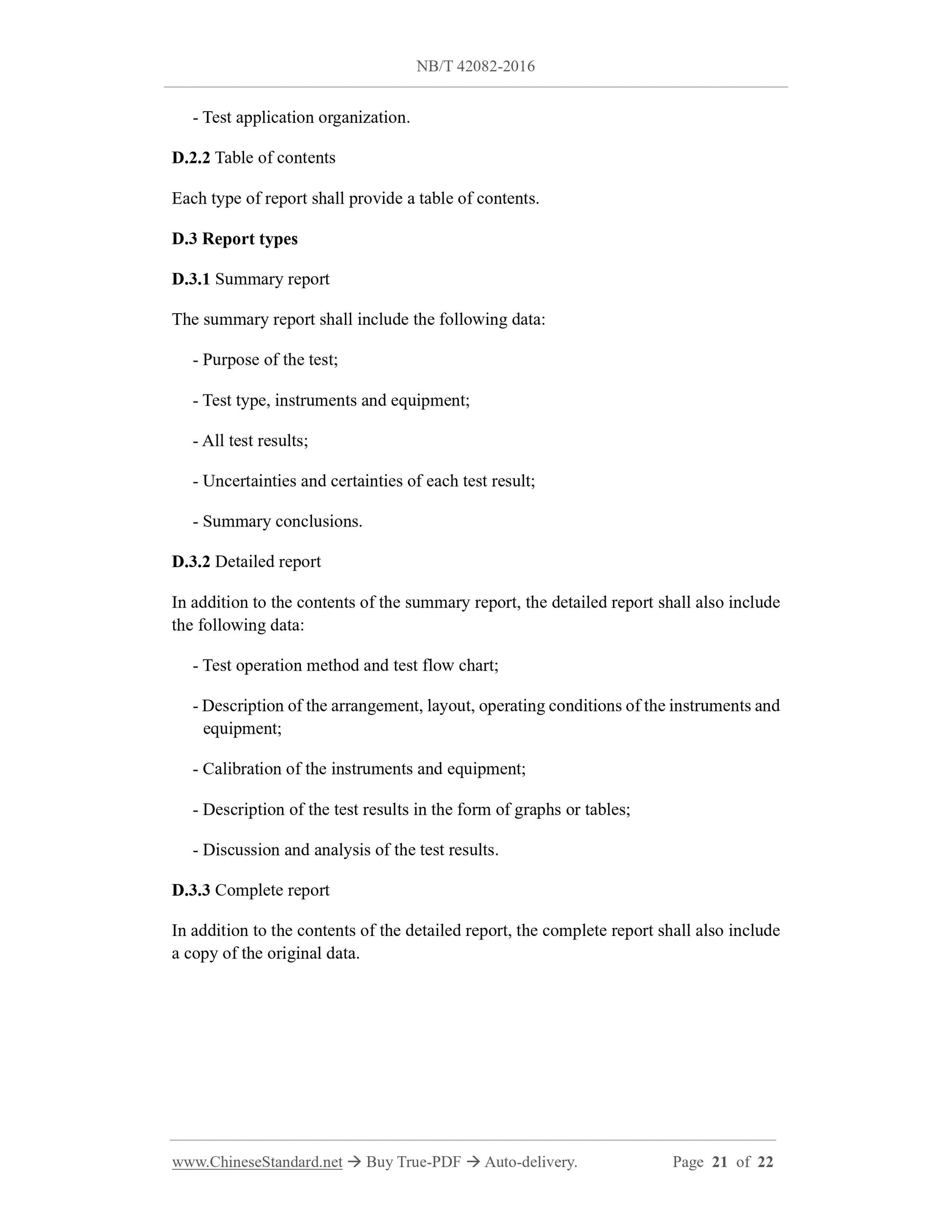1
/
of
11
www.ChineseStandard.us -- Field Test Asia Pte. Ltd.
NB/T 42082-2016 English PDF (NB/T42082-2016)
NB/T 42082-2016 English PDF (NB/T42082-2016)
Regular price
$260.00
Regular price
Sale price
$260.00
Unit price
/
per
Shipping calculated at checkout.
Couldn't load pickup availability
NB/T 42082-2016: Vanadium flow battery-test method for electrode
Delivery: 9 seconds. Download (and Email) true-PDF + Invoice.Get Quotation: Click NB/T 42082-2016 (Self-service in 1-minute)
Newer / historical versions: NB/T 42082-2016
Preview True-PDF
Scope
This standard specifies the general requirements and test methods for electrodes forvanadium flow batteries, mainly including thickness uniformity test, resistivity test,
mechanical property test, electrochemical activity test, apparent density test, surface
density test, flow resistance test.
This standard applies to the test methods for vanadium flow battery electrodes.
Basic Data
| Standard ID | NB/T 42082-2016 (NB/T42082-2016) |
| Description (Translated English) | Vanadium flow battery-test method for electrode |
| Sector / Industry | Energy Industry Standard (Recommended) |
| Classification of Chinese Standard | K82 |
| Classification of International Standard | 27.070 |
| Word Count Estimation | 17,181 |
| Date of Issue | 2016-08-16 |
| Date of Implementation | 2016-12-01 |
| Regulation (derived from) | National Bureau of Energy Bulletin No.2016 No.6; Industry Standard Record No.2016 No.10 (Total No.202) |
| Issuing agency(ies) | National Energy Administration |
Share
